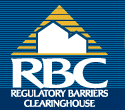Improving Quality of Life
with Workforce Housing
Communities depend on vital services provided by their essential workforces. Teachers, firefighters, and police officers are only a few examples of professionals that are hard-pressed to afford homes in the communities they serve. In areas where homeownership continues to be out of reach, nearby affordable housing can improve the viability of a community and its workforce. In an attempt to retain employees, Montgomery County, Maryland is promoting the area's first workforce housing program designed specifically for moderate-income earners.
Workforce Housing Program in Montgomery County, Maryland
Montgomery County established its Workforce Housing Program in 2006 to promote the construction of affordable housing for the county's public employees and other moderate-income workers. The program requires that developments with 35 or more residential units set aside at least 10 percent of units for households earning between 70 and 120 percent of the area median income (AMI). Policies and procedures adopted by executive regulation establish three principal factors — income, primary residence, and job location — to determine eligibility for renting or purchasing the workforce units. Households interested in participating in the program must submit an application to be placed on a point-based eligibility list. Applications are selected at random; however, priority points are given to first responders, as well as to city and county employees. In order to preserve affordability, a 20-year resale price control is in place for purchase units; rentals have a 99-year control period.
The Village at King Farm
The Village at King Farm is the first project developed under the Montgomery County Workforce Housing Program. It offers a total of 49 workforce housing units in an award-winning neo-traditional community located in proximity to retail centers and a metro station. Of the 49 units, 16 are allocated for households earning between 71 and 80 percent of the AMI; 16 are set aside for households earning between 81 to 100 percent; and the remaining 17 units are reserved for households earning 101 to 120 percent of the AMI. The two- and three-bedroom units ranging in size from 1,200 to 1,565 square feet feature high-end kitchens and hardwood floors. Other amenities available to residents of the Village include fitness centers, playgrounds, and picnic areas.
Conclusion
In areas with high housing costs, a workforce housing program can provide individuals with the opportunity to own or rent a home at affordable prices in the communities where they work. Creating homes for first responders and other essential personnel that will remain affordable into the future can aid in employee retention while increasing a community's housing supply.
Previous Article Search Archives
|


